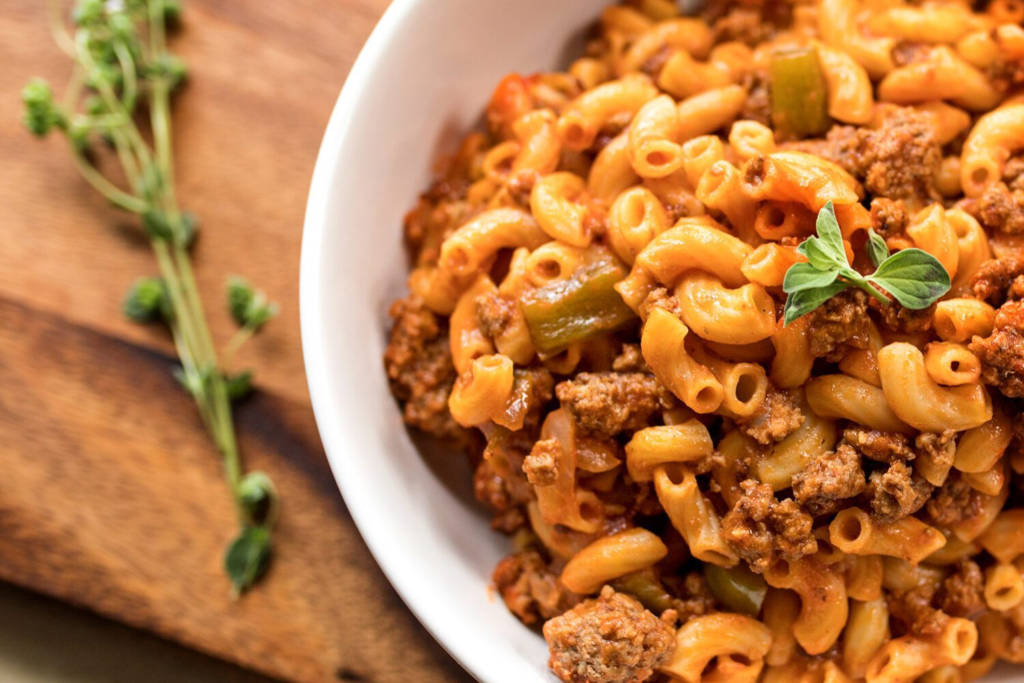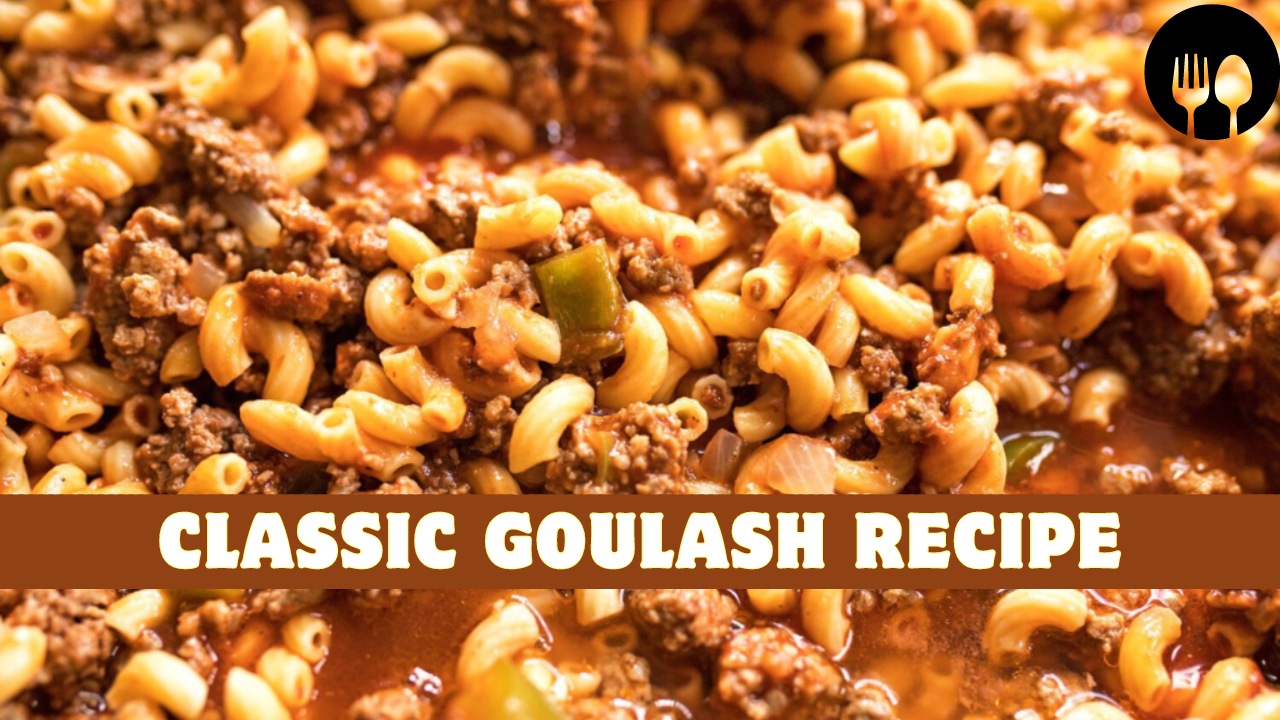Goulash, a dish steeped in tradition and rich with history, has won the hearts of many across the globe with its comforting flavors and hearty ingredients. Originally a humble meal for Hungarian shepherds, it has evolved into a beloved comfort food enjoyed in various forms worldwide. This article delves into the origins of goulash, explores its many variations, and provides a detailed recipe for a classic version of this timeless dish.
1. The History of Goulash
Goulash, known as “gulyás” in Hungarian, traces its roots back to the 9th century when Magyar shepherds roamed the plains of Hungary. The word “gulyás” itself is derived from “gulya,” the Hungarian term for cattle, reflecting the dish’s origins among cattle herders. These early versions of goulash were simple stews made with meat, vegetables, and basic spices, prepared over open fires.
Over time, goulash evolved from a shepherd’s meal into a staple of Hungarian cuisine.
The introduction of paprika, a spice native to the Americas and brought to Europe in the 16th century, transformed the dish. Paprika became an integral part of Hungarian goulash, giving it its distinctive red color and unique flavor profile. By the 19th century, goulash had spread beyond Hungary, adapting to various regional tastes and ingredients.2. Variations of Goulash
Goulash has many variations depending on the region, each adding its unique twist to the classic recipe. Here are some notable adaptations:
- Hungarian Goulash: The traditional version, known as “Pörkölt,” is a rich and hearty stew featuring beef, onions, paprika, and sometimes tomatoes. It is often served with potatoes or dumplings.
- American Goulash: Also known as “American Chop Suey,” this version is a pasta-based dish that combines ground beef, onions, bell peppers, tomatoes, and elbow macaroni. It’s a simpler, more Americanized version that’s popular as a family-friendly meal.
- Austrian Goulash: In Austria, goulash is typically made with beef and is often thicker and spicier compared to its Hungarian counterpart. It may include ingredients like caraway seeds and vinegar to enhance its flavor.
- Slovak Goulash: Slovak goulash is similar to the Hungarian version but may include additional vegetables like carrots and celery. It is often thicker and heartier.
- Czech Goulash: This version usually incorporates a greater variety of spices and is often served with bread dumplings.

3. Classic Goulash Recipe
Here is a traditional recipe for Classic Goulash that captures the essence of this beloved dish.
It’s simple yet delicious, showcasing the deep flavors that make goulash a comfort food favorite.Ingredients:
- 2 lbs beef chuck, cut into 1-inch cubes
- 2 tablespoons vegetable oil
- 2 large onions, finely chopped
- 4 cloves garlic, minced
- 3 tablespoons paprika (preferably Hungarian)
- 1 teaspoon caraway seeds (optional)
- 1 tablespoon tomato paste
- 1 can (14.5 oz) diced tomatoes
- 4 cups beef broth
- 2 large potatoes, peeled and cubed
- 2 carrots, peeled and sliced
- 1 bell pepper, chopped
- Salt and black pepper to taste
- 2 tablespoons all-purpose flour (for thickening, optional)
- Chopped fresh parsley for garnish
Instructions:
- Prepare the Beef:
- Heat the vegetable oil in a large pot or Dutch oven over medium-high heat. Add the beef cubes in batches, browning them on all sides. Remove the browned beef and set aside.
- Cook the Onions and Garlic:
- In the same pot, add the chopped onions and cook until they are softened and translucent, about 5 minutes. Add the minced garlic and cook for an additional 1-2 minutes until fragrant.
- Add Spices and Tomato Paste:
- Stir in the paprika and caraway seeds (if using), and cook for another minute to release their flavors. Add the tomato paste and cook for 2 minutes, stirring constantly.
- Combine Ingredients:
- Return the browned beef to the pot. Add the diced tomatoes and beef broth, stirring well to combine. Bring the mixture to a boil, then reduce the heat to low and cover.
- Simmer:
- Let the goulash simmer for about 1.5 to 2 hours, or until the beef is tender and the flavors are well-developed. Stir occasionally and check the consistency. If the goulash is too thin, you can thicken it by mixing a tablespoon of flour with a bit of water and adding it to the pot.
- Add Vegetables:
- About 30 minutes before serving, add the cubed potatoes, sliced carrots, and chopped bell pepper. Continue to cook until the vegetables are tender.
- Season and Garnish:
- Season with salt and black pepper to taste. Garnish with chopped fresh parsley before serving.
- Serve:
- Serve the goulash hot, accompanied by crusty bread, dumplings, or over a bed of noodles, depending on your preference.
4. Tips for Perfect Goulash
- Use Quality Paprika: Hungarian paprika adds authenticity and depth to the flavor. Choose a good-quality paprika for the best results.
- Brown the Meat: Browning the beef enhances the flavor of the goulash. Don’t skip this step, as it adds richness to the dish.
- Simmer Slowly: Allowing the goulash to simmer slowly helps to develop complex flavors and tenderizes the meat. Patience is key.
- Adjust Thickness: If you prefer a thicker goulash, you can add a flour slurry or cook the dish uncovered for a while to reduce the liquid.

5. Serving Suggestions
Classic goulash is versatile and pairs well with various side dishes. Here are some serving ideas:
- Bread: Crusty bread is perfect for soaking up the rich sauce of the goulash.
- Dumplings: Traditional Hungarian dumplings or spaetzle complement the dish beautifully.
- Noodles: Serve over egg noodles for a hearty meal.
- Rice: A side of rice can also work well, absorbing the flavorful gravy.
6. Variations and Adaptations
While the classic goulash recipe is delicious on its own, there are numerous ways to adapt it to suit your tastes:
- Vegetarian Goulash: Replace the beef with mushrooms or a combination of hearty vegetables. Use vegetable broth instead of beef broth.
- Spicy Goulash: Add extra chili powder or hot paprika to give the dish a spicy kick.
- Creamy Goulash: Stir in a dollop of sour cream or heavy cream at the end of cooking for a creamy texture.
7. Conclusion
Classic goulash is more than just a meal; it’s a celebration of rich flavors and cultural heritage. From its origins as a simple shepherd’s stew to its place as a global comfort food, goulash has endured through the ages due to its versatility and heartiness. By following this classic recipe, you can enjoy a dish that has warmed the hearts and filled the bellies of countless people around the world.
Whether you’re preparing it for a family dinner or a special gathering, goulash remains a timeless favorite that continues to bring people together.FAQs
1. What is Classic Goulash?
Classic Goulash is a traditional Hungarian stew made with beef, onions, paprika, and various vegetables. It is known for its rich flavor and hearty texture.
The dish often includes potatoes, carrots, and bell peppers, all simmered together to create a comforting and flavorful meal.2. What type of beef is best for Classic Goulash?
For the best results, use beef chuck or another cut of beef that benefits from slow cooking. Beef chuck is ideal because it becomes tender and flavorful after a long simmer.
Avoid using lean cuts, as they may become tough or dry during the cooking process.3. Can I make Classic Goulash with other meats?
Yes, you can use other types of meat such as pork or lamb, but the traditional recipe calls for beef. For a vegetarian option, consider using mushrooms or a combination of hearty vegetables to replace the meat.
4. What type of paprika should I use?
Hungarian paprika is preferred for an authentic flavor, as it has a distinctive sweetness and depth. There are different varieties, such as sweet, smoked, or hot paprika. For classic goulash, use sweet paprika, but you can adjust the type based on your taste preference.
5. Can I make goulash ahead of time?
Yes, goulash can be made ahead of time and actually benefits from sitting for a day or two. The flavors meld together better after resting. Store it in an airtight container in the refrigerator for up to 3 days. Reheat thoroughly before serving.
6. How can I thicken my goulash?
If your goulash is too thin, you can thicken it by adding a flour slurry (a mixture of flour and water) or by simmering it uncovered to reduce the liquid.
Alternatively, you can mash some of the potatoes or beans in the pot to thicken the stew naturally.